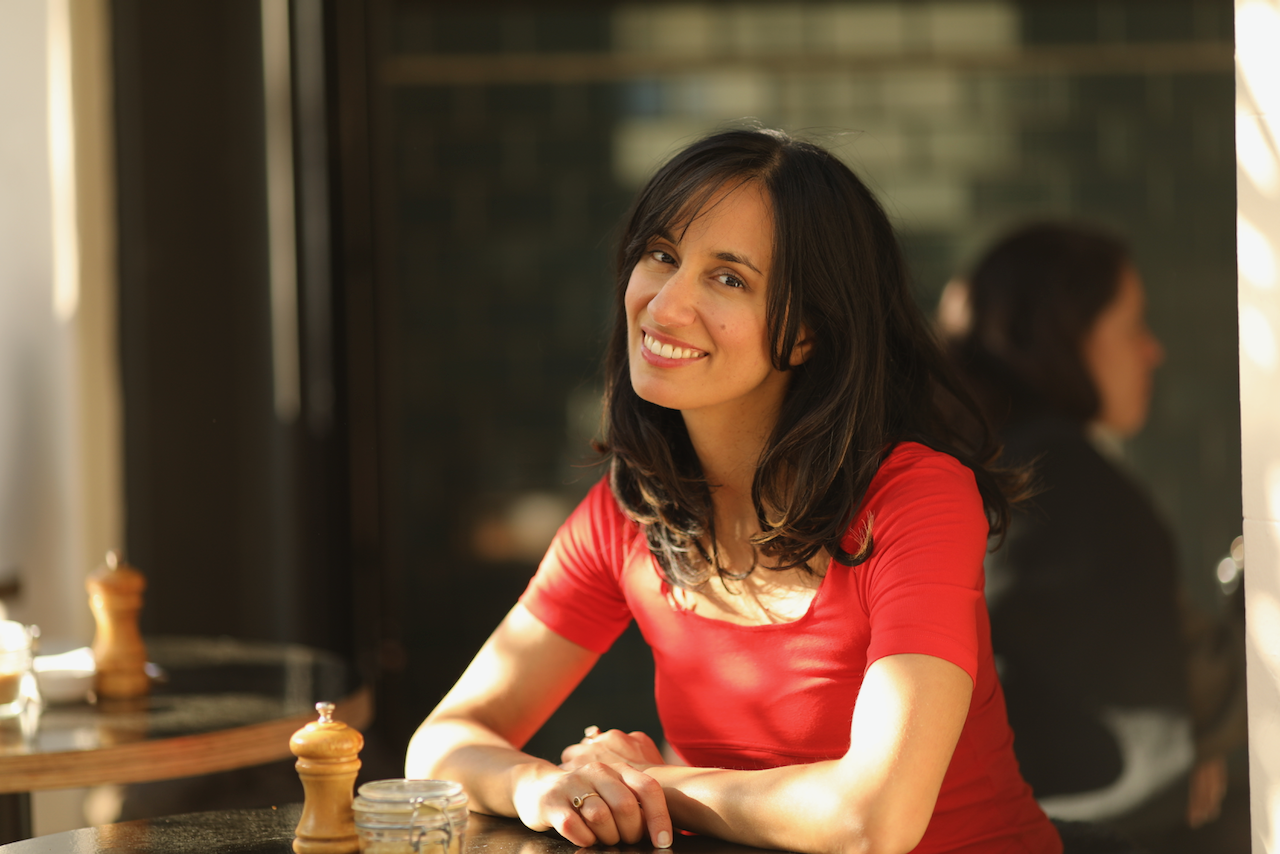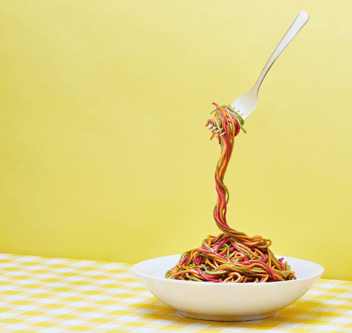
It’s no secret that rising rates, higher bills, and staffing woes are taking a big toll on the Australian hospitality industry, which, outside of Europe, is the biggest in the world per capita.
That’s why we’ve crafted this special series of articles based on our findings from MICE 2024 (Melbourne International Coffee Expo), where expert industry panelists gathered to speak about how cafe and venue owners can run better businesses.
In Part 5, we receive advice from three successful chefs on how to create a menu. From fresh produce and dishes for the health-conscious, to aligning your menu with your brand identity and working with suppliers, they tell us what they've learned over the years.
The insights come from Dom Gattermayr, the Co-Owner & Chef of Florian and Juniper, two cafes in Melbourne that have people queuing, and Chris Hamburger who’s the Director & Chef at Stagger Lee’s, one of Melbourne’s long-standing inner-north staples.
Finally, we also get comments from Ashly Hicks, the Executive Chef at the Darling Group, a hospitality company that owns and operates some of Melbourne’s most popular venues including Top Paddock, Higher Ground, and The Kettle Black.
What’s one approach to creating a cafe menu?
Before she opened her popular cafe, Florian, Dom Gattermayr envisioned a menu that of smaller, produce-driven portions.
“So often food gets thrown out at the end of a meal. So we created a menu where people can come in every day and have something light or they can have something more filling, but it's always going to be healthy-ish and sustainable.”
Why do you need to consider the brand of the venue?
Being the Executive Chef for a group of venues means that Ashly Hicks understands exactly what branding is. “One of our venues is Higher Ground, which is a very visually striking venue - a statement piece in itself. So the menu there needs to be a little more high end.”
In contrast another Darling Group venue, Stringers in Sorrento, has a more coastal- Italian feel, so the food is more casual.
How can you create a popular cafe menu item?
Sometimes, it’s just about doing simple, classic things very well, or creating your own version of a menu staple. Then, you might need to wait for customers to catch on.
When Florian first opened, Dom had identified that not many cafes in Melbourne were doing a classic French omelette, even though it's versatile enough to be eaten for breakfast or lunch and can be paired with both coffee or a celebratory drink.
“Originally, it wasn’t that popular. People weren’t impressed by a herb and gruyere omelette. But over time, it’s gained momentum and it’s now the most popular dish and what people travel for.”
Chris builds on Dom’s comments on building a popular menu item: “Having a star, high quality ingredient that you can build a dish around is important. It doesn't just have to be a pretty, Instagrammable ingredient, but something like an incredible grass fed lamb can work well.“
What are some popular dishes that have kept people coming back?
Stagger Lee’s has developed a real following over the years and Chris says their anchovies on toast is popular, and touches like raw garlic on their Zeally Bay sourdough keep the crowds happy.
For Ash, he says the Crab Benedict at Higher Ground on a savoury croissant bun is incredibly popular.
While he says it's often rich, indulgent dishes that are popular, he says that sometimes the most simple thing is the most popular. This is true of Florian's omelette, but also at Stringers in Sorrento where the five-grain porridge is one of the most popular menu items.
How do you develop a menu for a cafe that hasn’t opened yet?
What matters when building a menu is the style of the food, whether you're honouring the brand of the venue, and - importantly - is the dish going to save money or make money.
Ash from Darling Group has set up many cafes and says that you’re essentially going in blind when crafting a menu for an unopened venue. “Ultimately, your customers will decide what your menu is. You can steer it in a particular direction, and hopefully you’ve got some real winners, but most of the time you'll be ripping items off within two to six weeks.”
What’s better - a longer menu or a shorter menu?
Ash prefers a shorter menu and sticks to 12-16 items, and restricts specials to weekend.
“Design the menu around your kitchen, your staff, and the talent you have,” he says.
“Changes to the menu should be incremental, say two or three items at a time.”
How do menus change in long-standing venues?
Chris Hamburger, the Chef and Director of long-running Brunswick cafe Stagger Lee’s has had to change his menu many times over the years - but has kept certain items simply because customers demand it.
“Our anchovies on toast - I thought it would never fly - and it's one of my most popular dishes. Similar with the breakfast tacos… There's a couple of things there that people come in constantly for.”
One of the things he’s learned is if he’s going to change a menu item, he has to substitute it with something just as good. Doing it this way keeps things interesting and exciting for him, and means regular customers aren't as disgruntled when their favourites are removed from the menu.
When should you get feedback from the kitchen?
Every workplace operates best when all team-members feel heard - and this is especially true when running a kitchen. For Chris, he finds it invaluable to have long-term staff that he trusts and who understand all aspects of the dish.
“I’ve trained many of my staff up so it’s a bit easier when you've got four people in there who know how I do things. They know my flavour profile and how we put a dish together. But I also know that I have to trust their opinion because they know all the elements that go in to making a dish.”
“How it tastes and how it looks are obviously very important elements, but the staff also know whether they can handle it on a busy Saturday. How heavy is the prep; can the chefs do it in the time that they have?”
How important is efficiency in a menu?
With years of experience and 10 years of running Stagger Lee’s, Chris knows that patrons don’t want to wait more than 15 minutes for their food from the time they order.
“If you're really busy, you want to turn people in and out ASAP. You want them to enjoy their meal but if they’re waiting for their food, it's one less turn for the restaurant."
He says it's all about finding those "one percents" that impact quality, speed and efficiency. "We really focus on that a lot. Things like moves to the plate, or how you get a nice braised dish within a reasonable amount of time."
How important are your suppliers to your menu?
“Really important,” says Dom from Florian Cafe. “We've worked with the same suppliers since we opened. We work with a lot of small farms. It's not great for costing, but I think that feeds back into our menu and our smaller offering. We try not to overdo it and we try to use the best ingredients.”
Additionally, building relationships is incredibly important. “I just text them [my suppliers] and see what’s in abundance. And they'll come back with ideas, samples, and give me ideas that I didn’t realise I could do…I’ve realised you can actually lean on them [suppliers] a lot more than you think.”
What is the best way to work with your suppliers?
Echoing Dom’s sentiments, Ash says it’s important to remember you’re in a relationship - and that means talking about the important issues - like pricing. “That doesn't mean battling with them. It’s about relationship building and transparency. It's telling them, ‘I’ve got to do a fish dish and I've got $6.50 to spend. Can we work together on this?’”
Ash says having multiple venues means having more leverage with suppliers, but regardless of size, venues can negotiate with suppliers - especially if you’ve built a relationship over time.
Suppliers can often change price lists and there are continuous fluctuations, but it’s so easy to miss these changes - and over a year a few cents for one product can seriously add up.
Despite relationships being paramount, Chris says “it doesn’t always pay to stay.”
“I love my suppliers - but I’m also running a small business,” he says. “So I review twice a year. I look at the bread, I look at the eggs, all the big items, like dairy. You have to check, and you have to know what other people are paying.”
“It’s really important to know the market. You might have a really good relationship with your fruit guy, but you’re not getting the ideal pricing on five of your biggest items"
Foster those relationships, says Chris. "But you need to pick up the phone and make the calls. If you tell your supplier “I can do better, can you meet it? They’ll do it.”
How should you be costing your menu?
Chris says that it’s important to look at your P & L. “We do a monthly check and all the costs are there. You just have to know that figures and prices fluctuate all the time and that it’s really important to stay really fluid with your menu. If people love your mushroom toast, but mushrooms go through the roof, then those just have to come off the menu.”
Chris also advises checking in with suppliers regularly because prices fluctuate regularly.
“Your suppliers can guide you in a certain direction and help you get the best results for your venue - because what's good for you is good for them in the long run."
How important is the takeaway option to your bottom line?
Florian Cafe might be known for its omelette, but people also queue for the displayed beautifully in their take-away cabinet.
Says Dom: “we have a chef that makes the sandwiches and then we have one front of house person that just runs the counter. We make 100 chicken rolls on a Saturday and that's one of six sandwiches. So we're making a lot of sandwiches.”
The sandwiches - with their crispy skin and artisan sourdough - help pull in that valuable crowd that doesn’t necessarily need a table, but often upsize with a pastry or a coffee.
How does it feel to take a labour of love off the menu?
Chefs sometimes have to make the hard decisions to take particular dishes off the menu. When people have spent time and energy on particular dishes, it can hurt to get rid of them because they’re not resonating.
But Chris says “there’s no way we put labour into something that doesn’t move.”
“No chef can have a menu where everything is a 100% seller - and customers can be very harsh critics.
“Hospitality is the school of life. It's going to teach you lessons and you have to take a shot to the ego.”
Essentially says Chris, when you’re designing a menu, know that customers are holding on to every cent they can. This means you have to give them value on a plate, make your margins, all while staying true to your vision and style.
Categories
Advice
Food lover, restaurant-goer, hospitality appreciator, and writer of content at Ordermentum.








